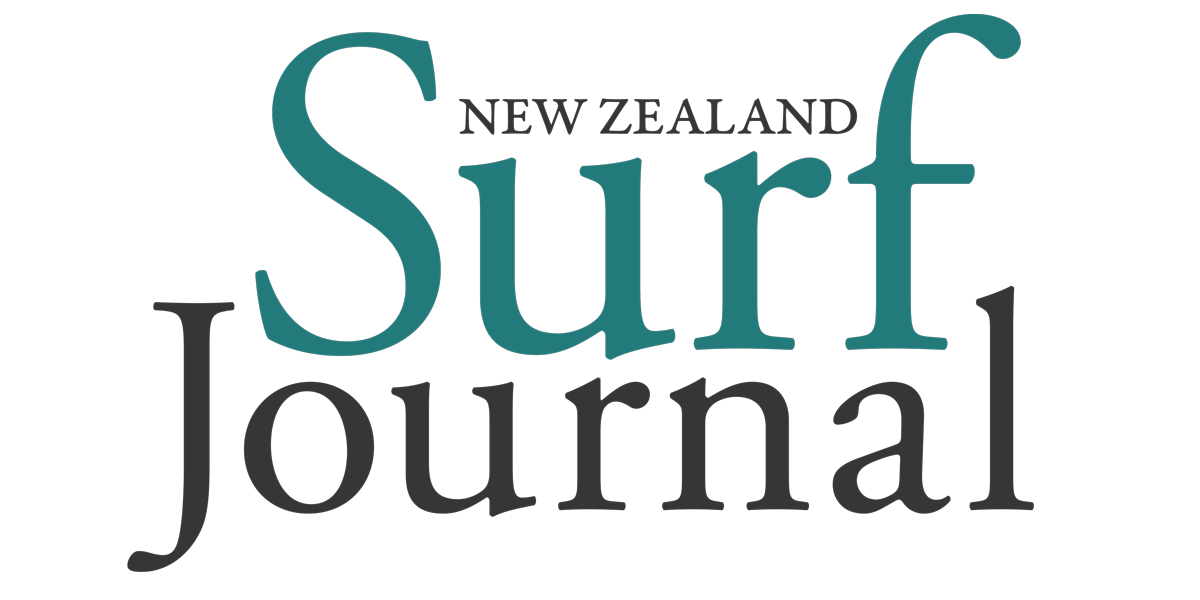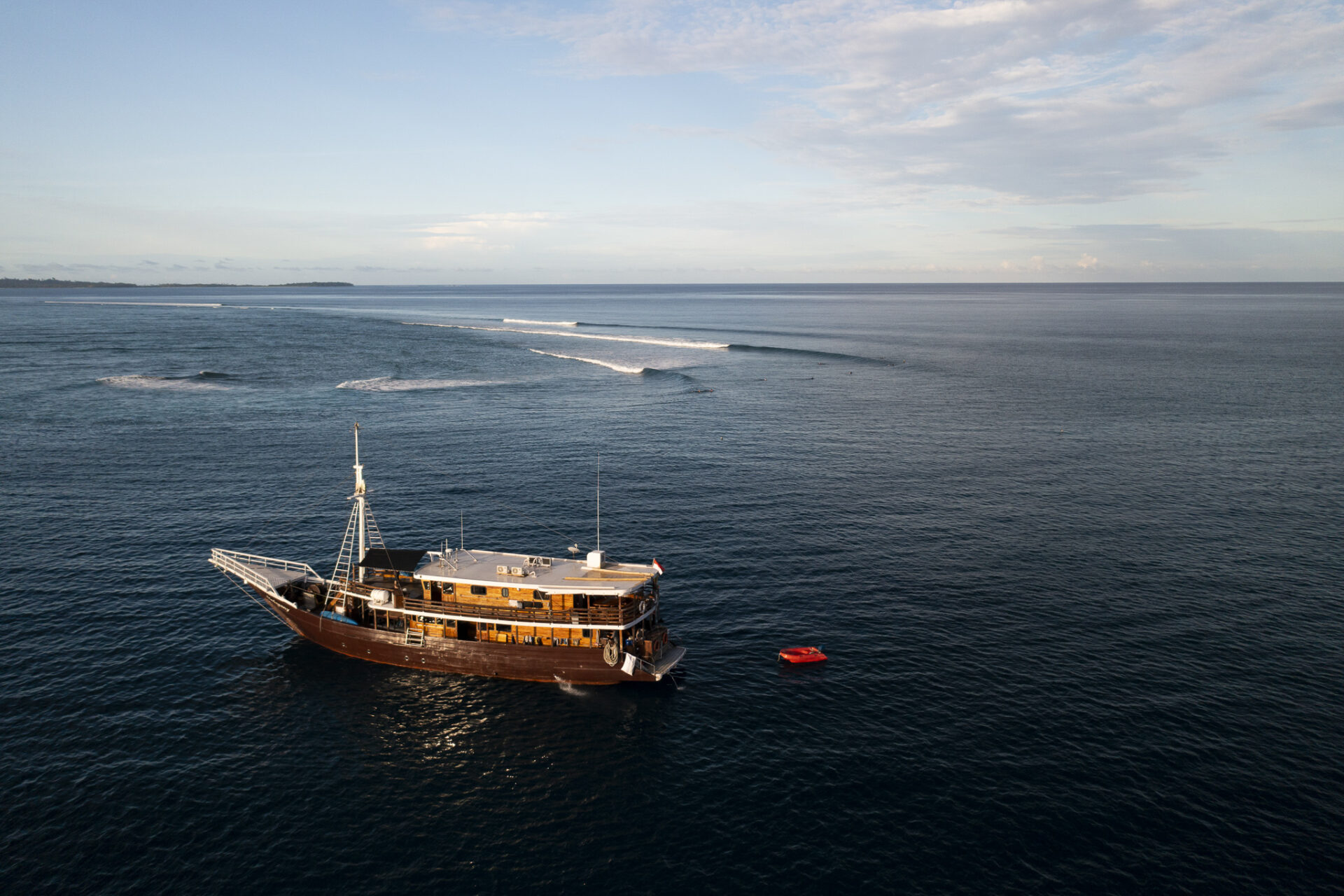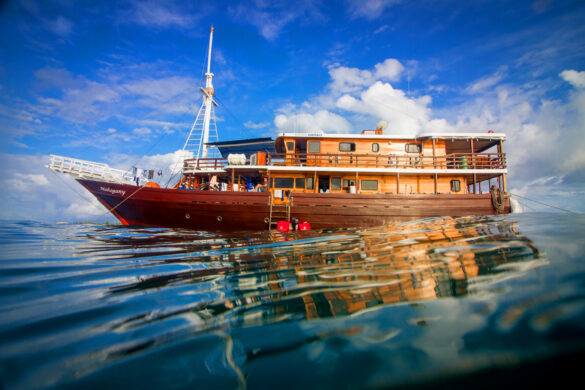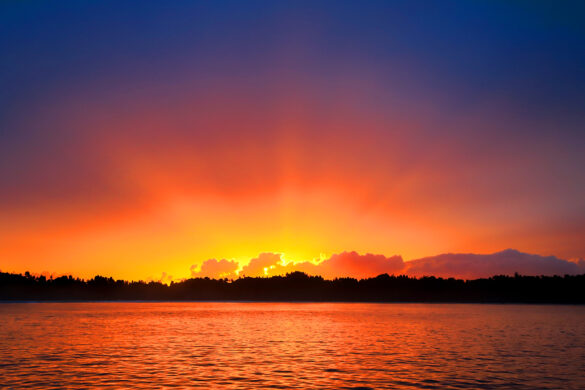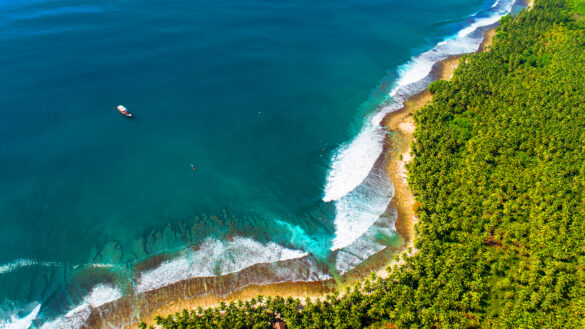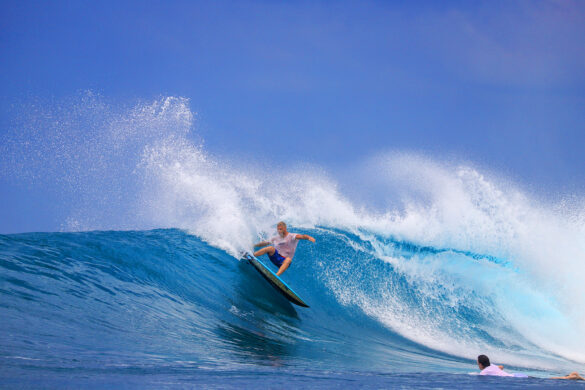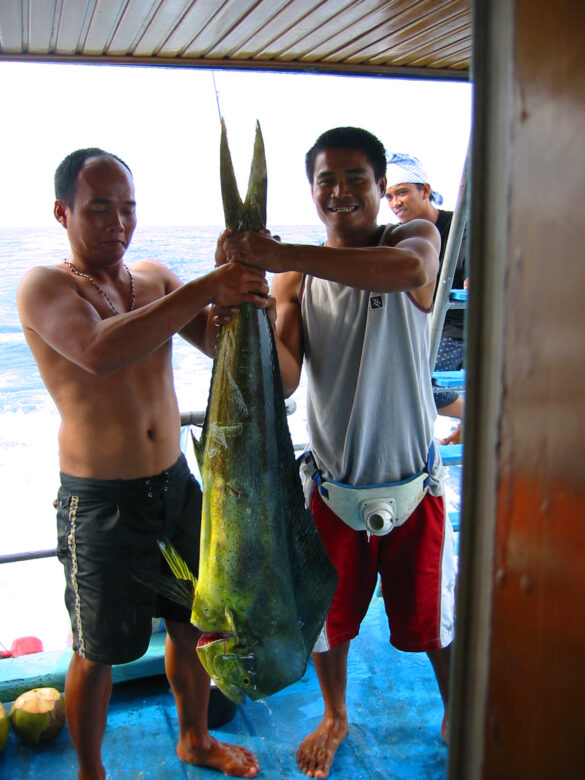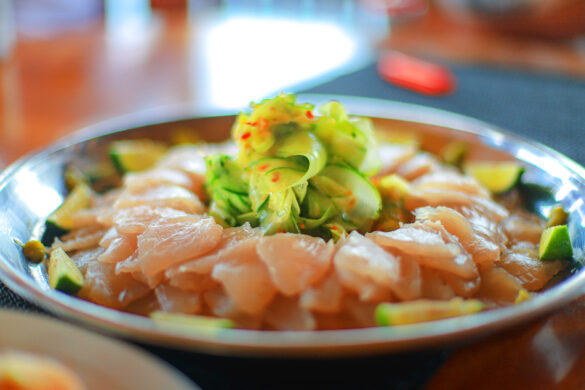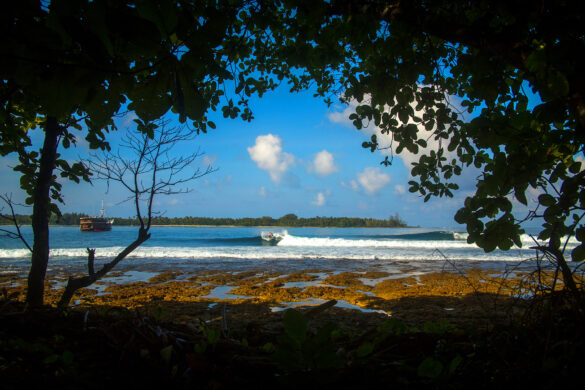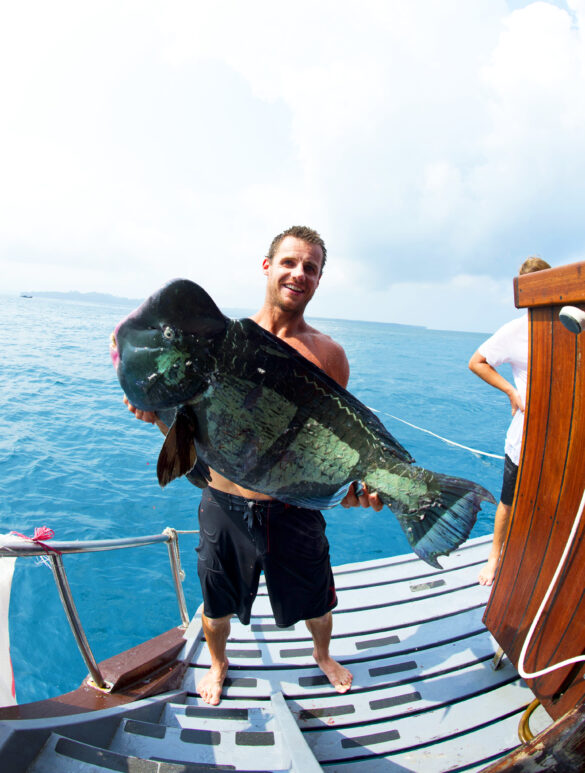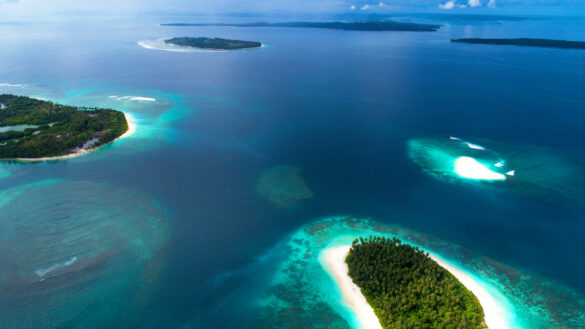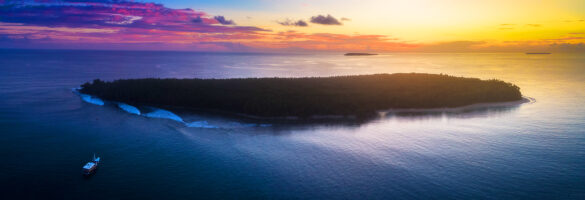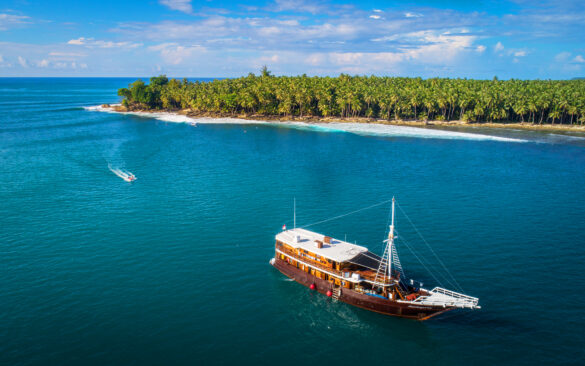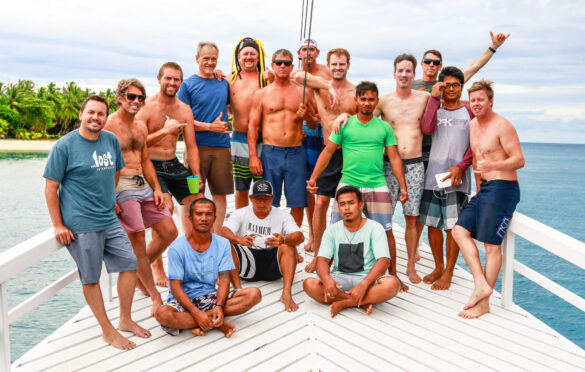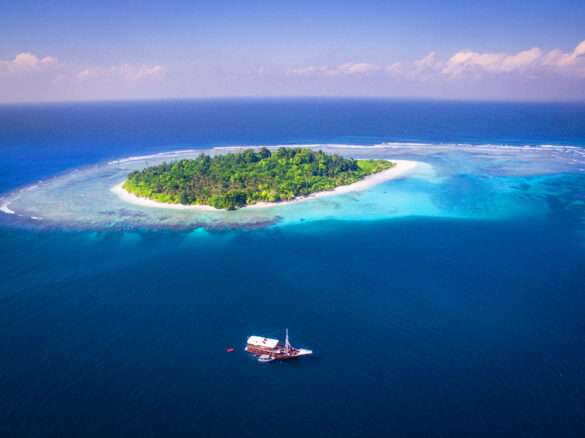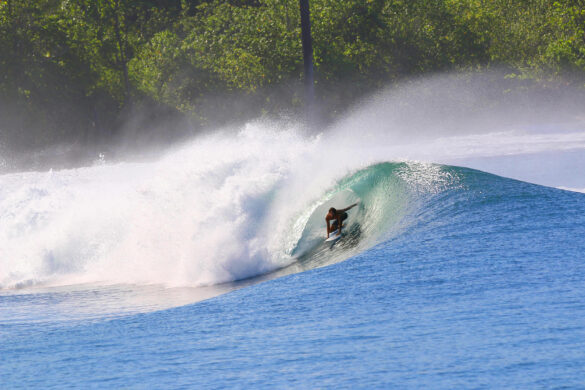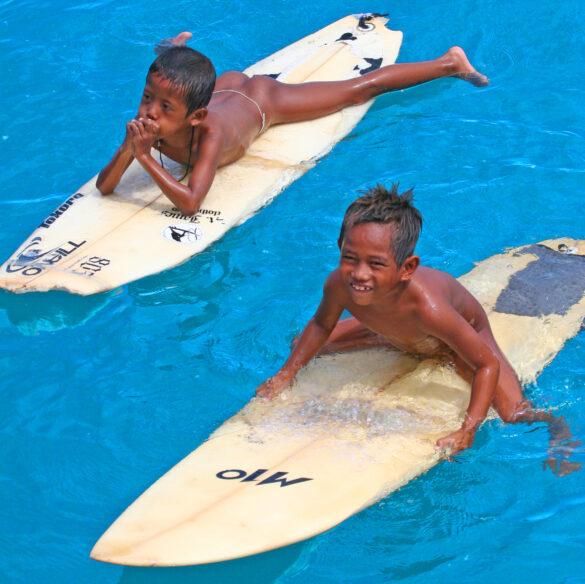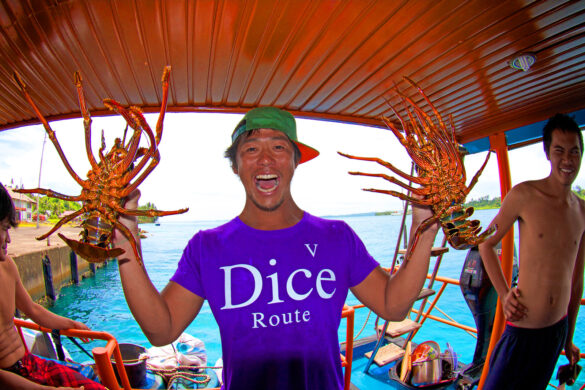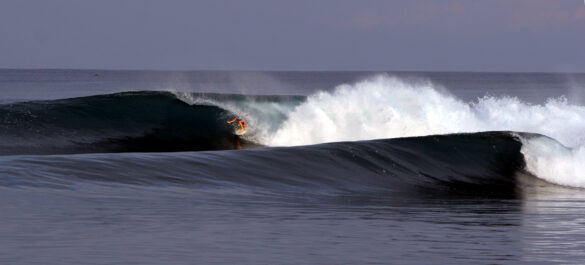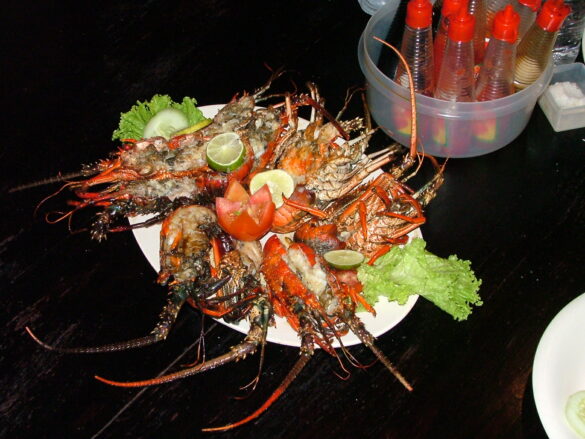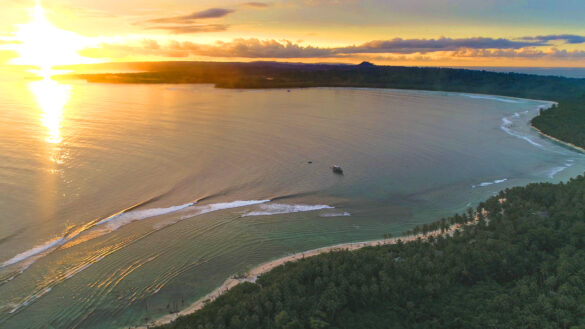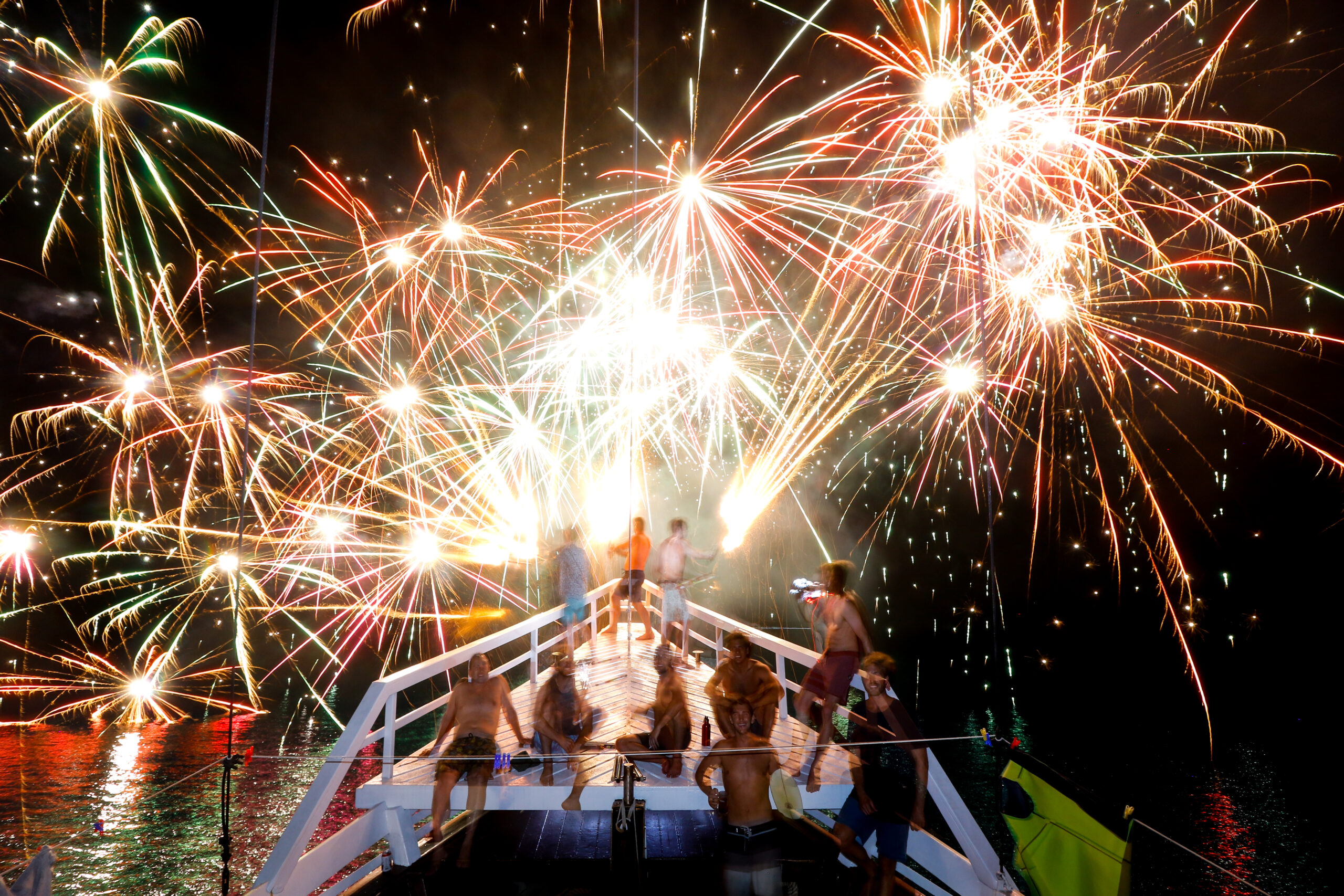Let’s face it: Indonesia is the holy grail of surfing. We’re talking Indian Ocean swells with an unimpeded run up that’s longer than anywhere else in the world. Clean lines, perfect reefs and located right near the equator’s typically light winds. This is as close to nirvana as any surfer might hope to get. So, why haven’t you been?
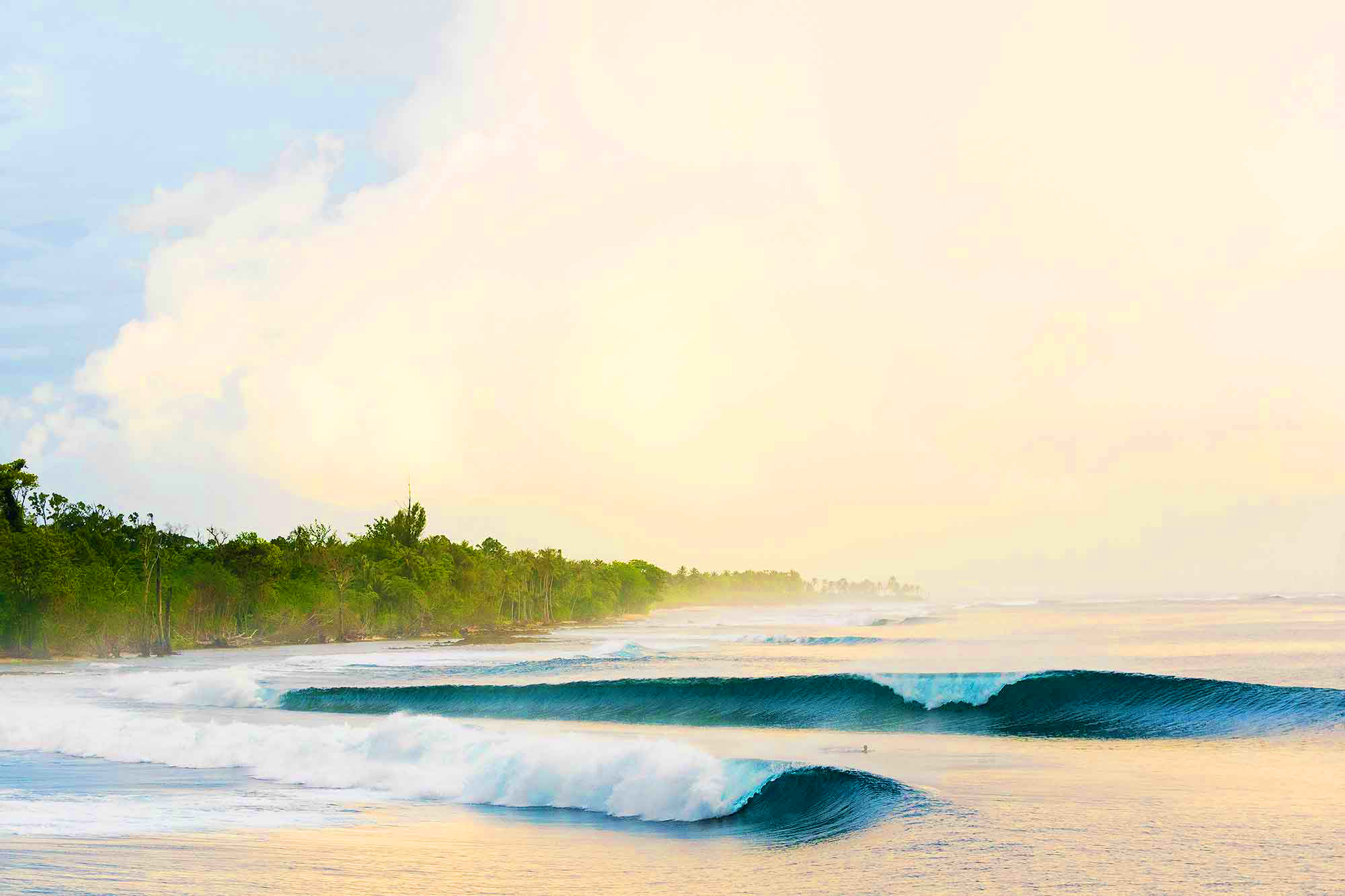
For me, it felt like I was leaving the last chapter of a favourite book for some special occasion. Then … bang … a whole heap of friends and family suddenly departed. Dead. Natural causes. Accidents. Cancer. Suicide. Horrible. Sad. What the fuck?
It brought me a new perspective on life. I’m 48 and have never been to Indo … and I’m a surf photographer.
One of my best mates, Brett Wood, just shook his head and introduced me to Danny Siudara and Chris Scurrah, aka Scuzz, of Sumatran Surfariis. They’ve been adventuring through the Mentawais for more than 25 years now. I could tell I was in good hands.
Danny is 51. He grew up in Ventura County, California. He went to college at Cal Poly on the central coast of California, then moved to San Francisco where he lived for 20 years. In 2015, he moved to north Santa Barbara county where he lives now.
“I took my first trip with Scuzz in 2000 and then bought into the company in 2002,” he explains.
Danny has been the full-time booking manager, marketing, PR, front-end set up and administration guy for Sumatran Surfariis since 2004. He’s the perfect guy to start firing some questions at.
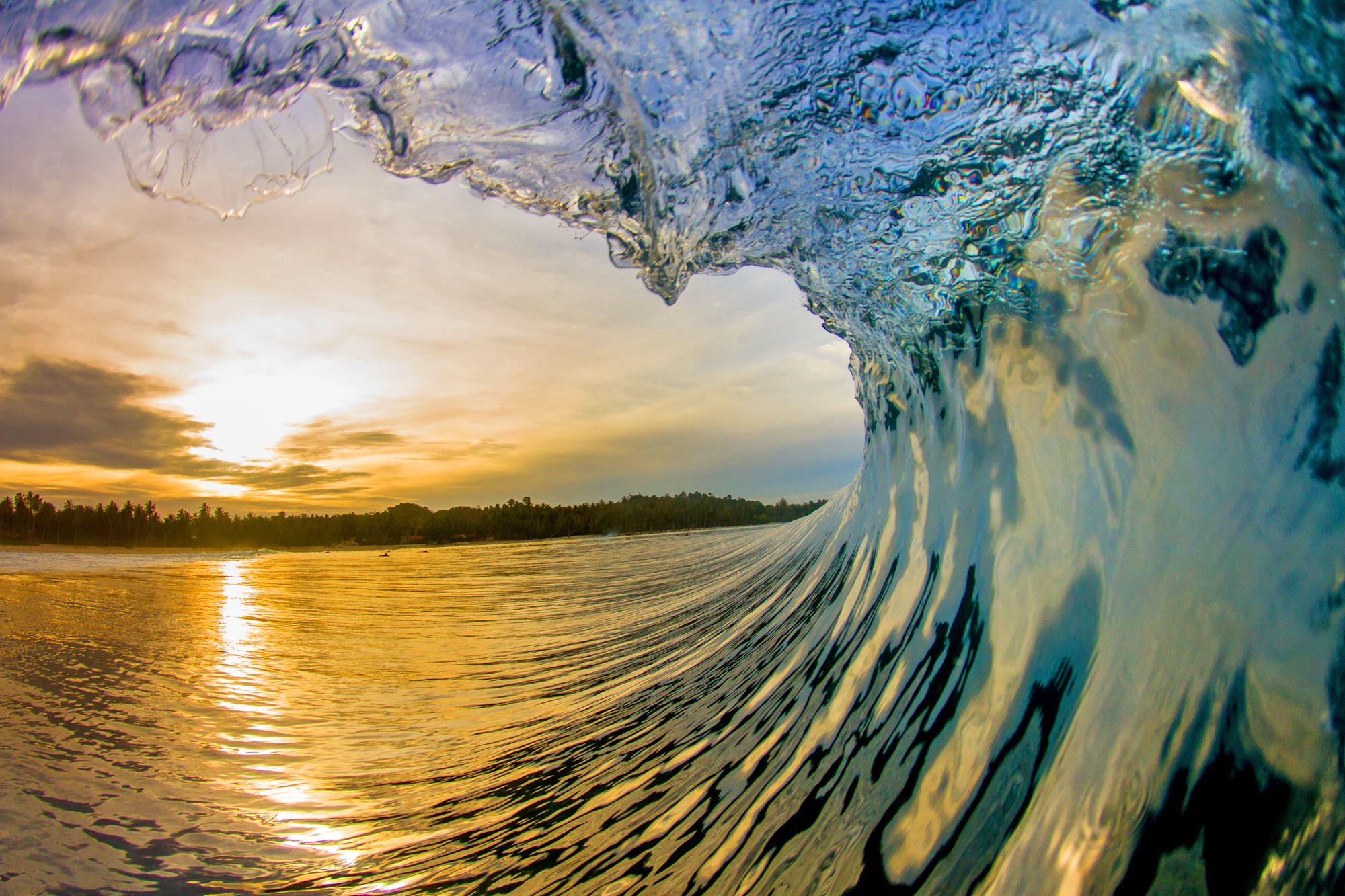
Selecting A Boat Operator For Indo
“Without a doubt the guide and crew are the most important factors,” Danny reveals. “You could have the fastest, biggest, most pimped out boat in the world and it won’t make a whole lot of difference if the crew is a bunch of amateurs. It’s not just how fast you travel; it’s how you travel.”

For example he said you should find out if the crew were prepared to motor at night to minimize surfing down time during the day and try to gauge their quality of service.
“Does the crew recognize the patterns of the other boats and how to avoid them?” he asks. “Is the crew completely on top of swell and wind direction, and are the fully versed in the subtleties of how this affects each spot? Does the crew have secret or lesser-known spots in their arsenal so they can dodge the other boats? These are all things to consider when choosing a charter operator.”
Danny said Scuzz had been guiding full-time in the Mentawais and North Sumatra since 1998 – nearly a quarter century of constant travel and learning about these island. Yu, a Japanese hellman and adventurer, had been guiding for Sumatran Surfariis full-time since 2002.
“There are only a very small number of skippers left that can claim that much full-time, constant immersion in this process,” Danny explains. “Almost all the other guides that began when Scuzz did have either retired, moved on to resorts or other projects, or charter other areas part-time throughout the year. This is our bread and butter. We have stuck to this area and made it our expertise. That focus and concentration pays off hugely for our guests.”

When choosing a charter operation, Danny said you should consider who the trip is for: you or the charter operator.
“There are a multitude of ways for a charter company to cut corners and save costs, and many just do the normal milk run of spots to save on fuel and basically avoid thinking too hard,” he said. “They have their own set itinerary and the guests are just along for the ride. At Sumatran Surfariis, we make it clear that this is your trip, and we work together with our guests to customize each trip to meet their specific needs.”
“If you want to travel halfway around the world and just park it at HTs or Macaronis for two weeks, that’s your prerogative,” Danny smiles. “But we tend to attract the guests that still view a trip to Sumatra as an adventure.”
It was always important for a group of surfers to be honest about what they wanted and their abilities. Are you after the heaviest waves? Are they looking for a cruisy experience? Is crowd avoidance the most important thing? Do you want to try and find new spots?
“Even after almost three decades, there are still secrets to be found, even in the Mentawais,” Danny shares. “It often just takes patience, an open mind, and a willingness to try something different. Throughout the trip, we are making constant adjustments to the initial itinerary based on the forecast and the surfers ability/feedback. It’s a group decision-making process between all the guests and the guide to achieve the best possible outcome.”
The boats operating throughout the Mentawais also differ in terms of the experience they offer and this should be taken into consideration when booking.
Do you want a floating hotel where you basically stay indoors the entire time except to surf? Or do you want a more authentic immersive experience?
“At Sumatran Surfariis, all our boats are patterned after traditional, successful Indonesian-style fishing vessels,” Danny explains. “Sleeping accommodations are more modest because we know our guests like to spend more time outdoors doing things like fishing, diving, jumping off the roof, having a snack and watching their mates surf, etc.”
“We want our guests to feel more like pirates than vacationing yuppies,” he laughs.

Danny said the operator’s crew also contributed to the experience and to look for a crew that had been together for a long time.
“We know the importance of paying our crew a good wage and treating them with respect, so we’ve had very low turnover compared to the rest of the industry,” Danny explains. “You want to find out if the crew does everything really right to make a trip special. Do they bring your boards down for you – even wax them for you, and speedboat you out to the lineup? Will they quickly come pick you up again when you wave your board to be picked up? Do all the crew remember your names within a few days? Are they fun/funny to be around? Is there a ding repair expert among the crew? How good is the cook, and can he accommodate special requests like a vegetarian diet, a vegan diet, a gluten free diet, etc? Will he cook you traditional Indonesia food if you ask him? How good is the engineer and can he fix any problems regarding the boat or dinghy? How experienced is the captain, the actual guy that drives the boat?”
“We employ a 100% Indonesian crew at Sumatran Surfariis,” Danny offers. “They are the best, hardest working guys in these waters, and hiring locally is the least we can do for the community that has given us so much.”
“If you want to travel halfway around the world and just park it at HTs or Macaronis for two weeks, that’s your prerogative. But we tend to attract the guests that still view a trip to Sumatra as an adventure.”
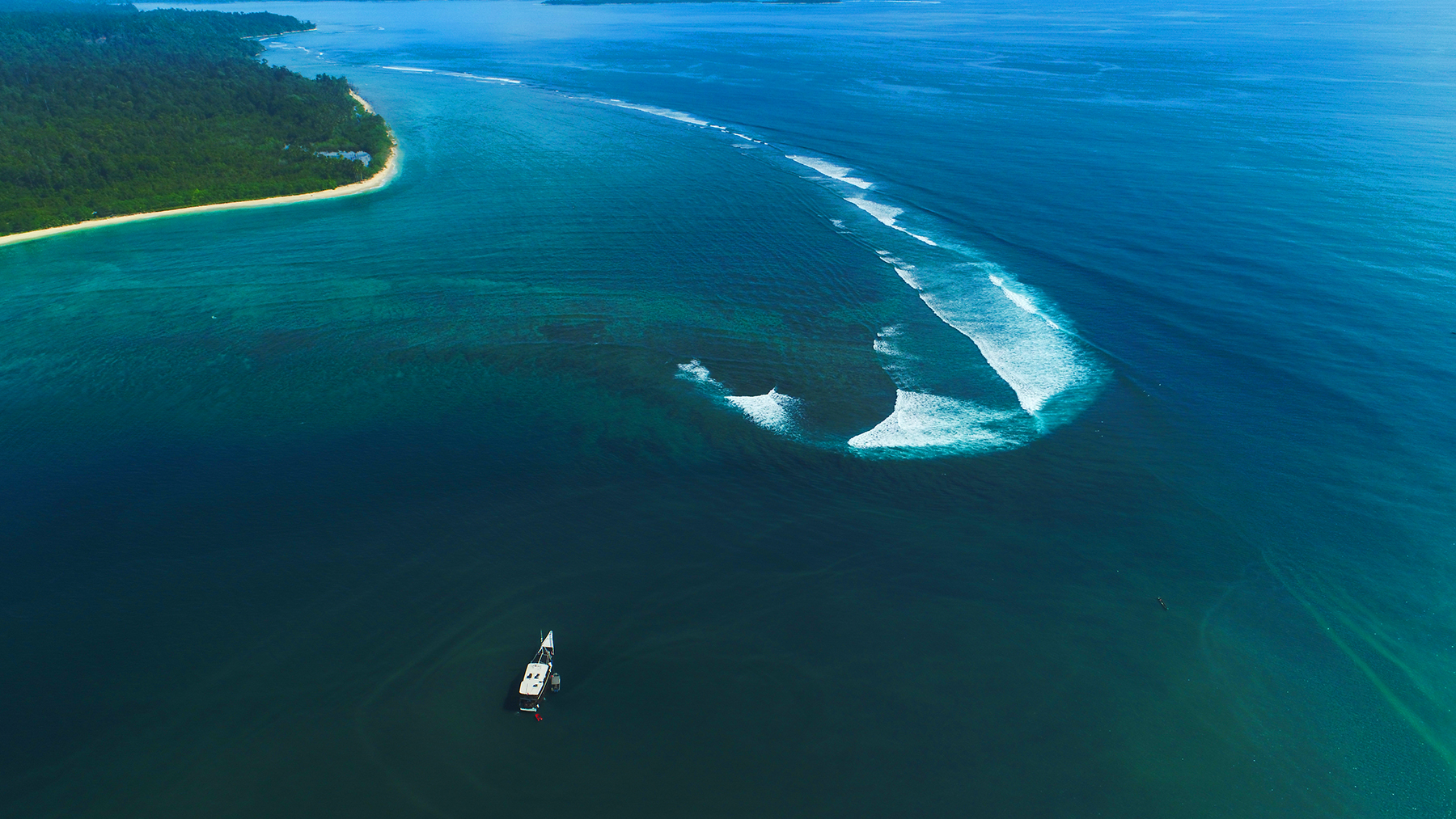
Where To Surf In Sumatra?
The band of islands that lie parallel to the west coast of Sumatra are where the magic happens. In the south we have the Mentawais – a trio of islands with Pagai-Selatan in the south then Sipura and Siberut in the northern end. Beyond that to the north we have the Telos, Nias, Hinakos and Banyaks.
The Mentawais tend to have more of the perfect, shallow, ruler-edge waves, whereas North Sumatra (Telos, Nias, Hinakos, Banyaks) tend to have slightly less perfect, open water waves. That’s in comparison to the Mentawais – if the Mentawais didn’t exist, then North Sumatra would have some of the most perfect waves in the world.
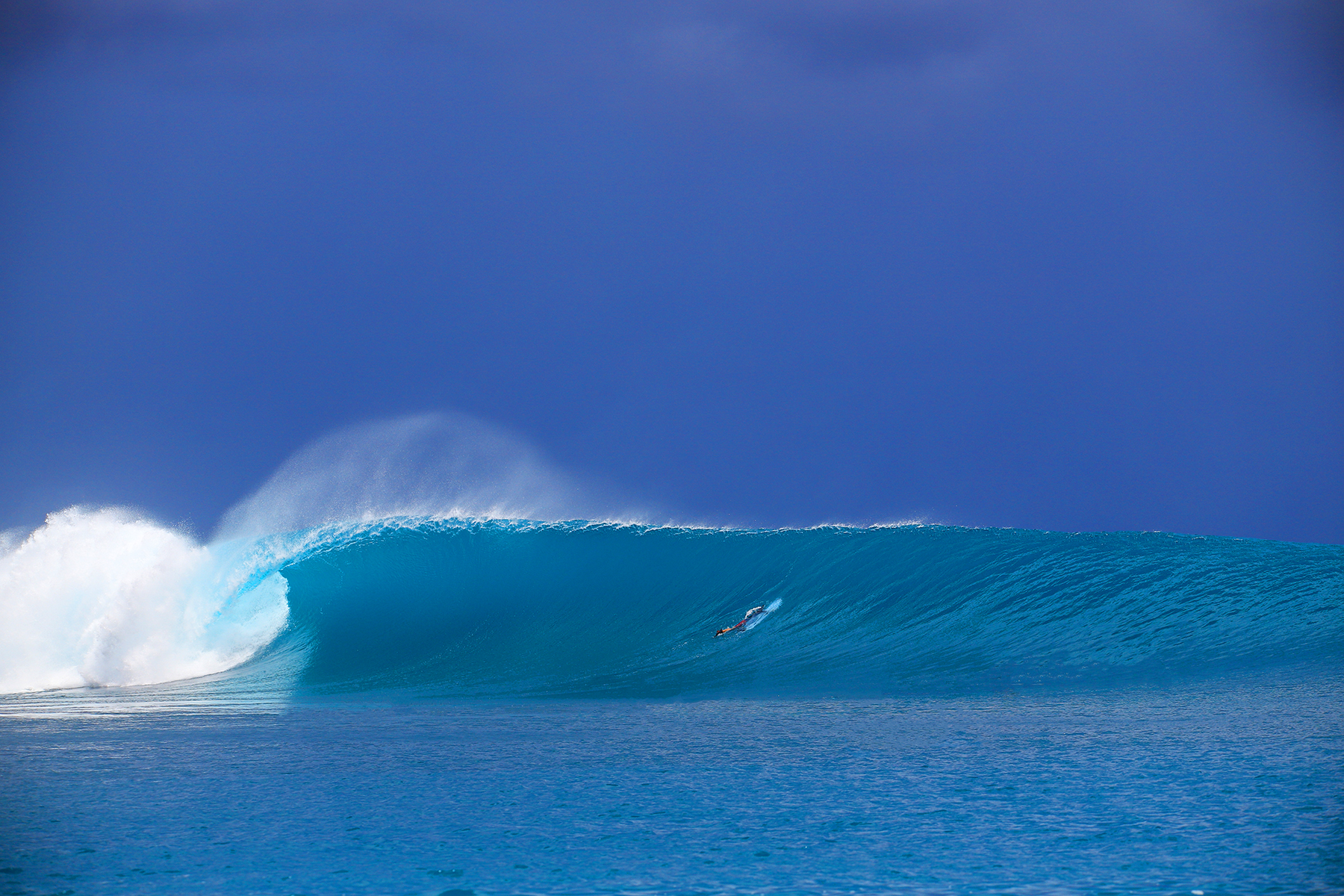
That perfection comes at a cost. The Mentawais tends to be a lot more crowded than North Sumatra. Compounding this is that the spots in the Mentawais are closer together and easier to get to, so people can be tougher to dodge. The spots up north are a bit more spread out, so a lot of charter operators are less willing to travel further and solo sessions can be easier to come by.
“You’re also more likely to hit the bottom in the Ments than North,” laughs Danny.
With all that said, Danny said there was a fair bit of “Mentawais” in North Sumatra, and a fair bit of “North Sumatra” in the Mentawais.
“It’s really, really hard to not have an amazing trip to either area,” he explains. ‘The B-Level spots at both locations will blow away 99% of people’s home breaks.”
Chris Scurrah, or Scuzz, as he is better known, knows these island chains better than most. He is quick to explain the geography of the area.
“Telos, being slightly more to the north, means the swells have a little further to go and hence will be slightly diminished in size and power – very, very slightly,” Scuzz reveals. “Bawa further north again contradicts this. Most of the northern Telos are also not as exposed to the more south swells, while the southwest swells sweep in beautifully to the island chain.”

Scuzz tells me that it was around 1916 when the Telo chain last lifted greatly.
“Usually it’s a cycle of about 200 years where each section of the subduction line along Sumatra releases pressure and the Australia plate pushing under Sumatra slips back, southwest and up,” Scuzz smiles. “Siberut and Sipora are due to slip back about 35 metres to the southwest and 2-3 metres vertically,” he shares. “They are overdue and from my experience in the areas that I surfed before, and after a lift, the areas after the lift are not as perfect, or as good overall. So that may be a factor also in why the Mentawais have so many epic waves so close.”
Scuzz said the Telos were also called the Batu Islands, which translated to rock.
“They do have a lot more rock formations and height in the islands compared to their sizes,” Scuzz adds. “They were also connected to the mainland via a land bridge in more recent times than the Mentawais, so have some different species. The equator goes through the north end of the chain and so you will find the lightest winds around here, and sometimes it can be quite a different wind to say the South Mentawais. You tend to surf more rights in the Telos, and while there are amazing barrels, there are a lot of fun wallie waves as well.”
“Siberut and Sipora are due to slip back about 35 metres to the southwest and 2-3 metres vertically … they are overdue … from my experience the areas after the lift are not as perfect, or as good overall. So that may be a factor also in why the Mentawais have so many epic waves so close.”
When To Hit The Mentawais
These days the Mentawais is more crowded than it was 25 years ago, but it’s still nothing like the Superbank, Trestles, or even Bali.
“From the months of June to August, there can certainly be some competition, but even in those months there are so many options that you can score many solo sessions or sessions with just one or two other boats,” Danny explains. “The problem is that people want to be able to come back and say, ‘Dude, we scored Rifles and HTs and Macaronis and Greenbush and yadda yadda yadda’. But there are still so many other options that it’s possible to get away from crowds.”
“For example, a friend asked me the other day how many spots there were in the Mentawais,” Danny adds. “I told them, ‘Famous spots or just spots in general?’ He said, ‘Famous spots’.”
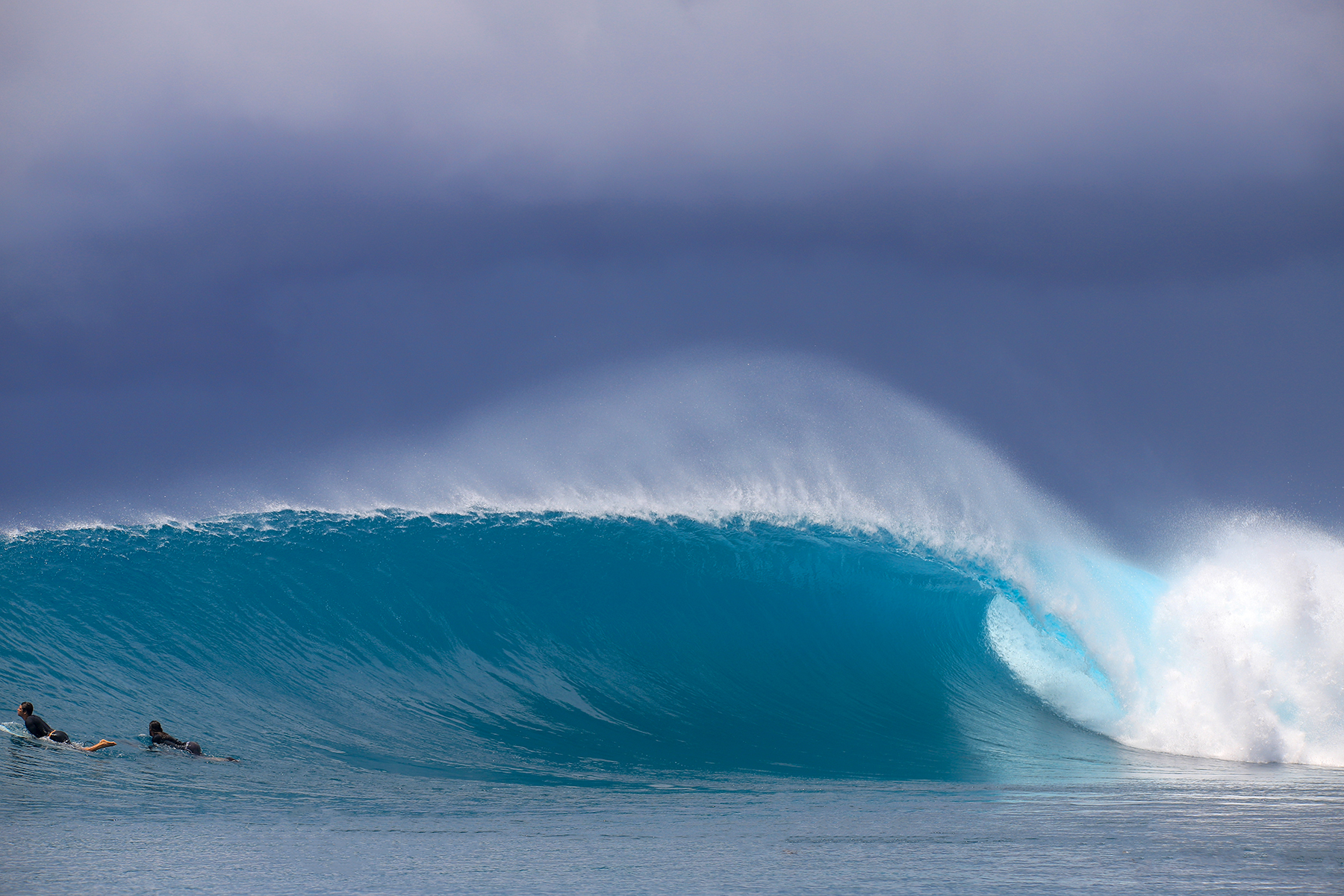
Within two minutes Danny had listed over 30 spots that were actual verifiable spots that all have an agreed-upon name. They are not all the top of the heap, world class waves, but each have to be at least “good,” or they wouldn’t all have a name that everyone knows.
“I thought of more later on the drive home,” Danny shares. “Then I thought of all the lesser-known spots. Then I thought of all the spots that don’t have an agreed upon name, spots that we may call one thing and only a small number of operators that know about them might call them something different. Then I thought about the true ‘secret spots’ that only we or maybe 2-3 other operators know about. Then I thought about all the spots that might be known, but people are just unwilling to travel to, either because they are lazy, don’t want to think outside the box, or don’t want spend the money for fuel on.”

“In all, you’re talking dozen and dozens and dozens of spots,” Danny smiles. “If an operator can’t score their guests uncrowded surfs on a regular basis they either don’t have the knowledge, don’t have the desire, or their guests want to park it at magazine waves. We pride ourselves on finding uncrowded waves – it’s just a matter of how much effort and sacrifice you’re willing to make.”
“The problem is that people want to be able to come back and say, ‘Dude, we scored Rifles and HTs and Macaronis and Greenbush and yadda yadda yadda’. But there are still so many other options that it’s possible to get away from crowds.”
Select Your Quiver
With waves ranging from playful to serious waves of consequence (often in the same day) how do you make sure you’re using your baggage allowance to the best of your abilities? Danny reckons start with a standard quiver and fine tune from there.
“I’d recommend at least this as a standard quiver: your normal everyday shortboard, a bit of a step up that’s similar to your shortboard, but can handle a bit more size and grunt, and then a proper step up/semi-gun,” he explains. “I’ll use myself as an example. I’m 5’9″, and my normal shortboard is a 5’9″ squash tail. Even though the waves in the Mentawais are more powerful than my home breaks, I can still surf the vast majority of them, on most days, on my normal surfboard. Any additional power is usually balanced out by the fact that I float better because I weigh less due to not wearing a wet 4:3.”
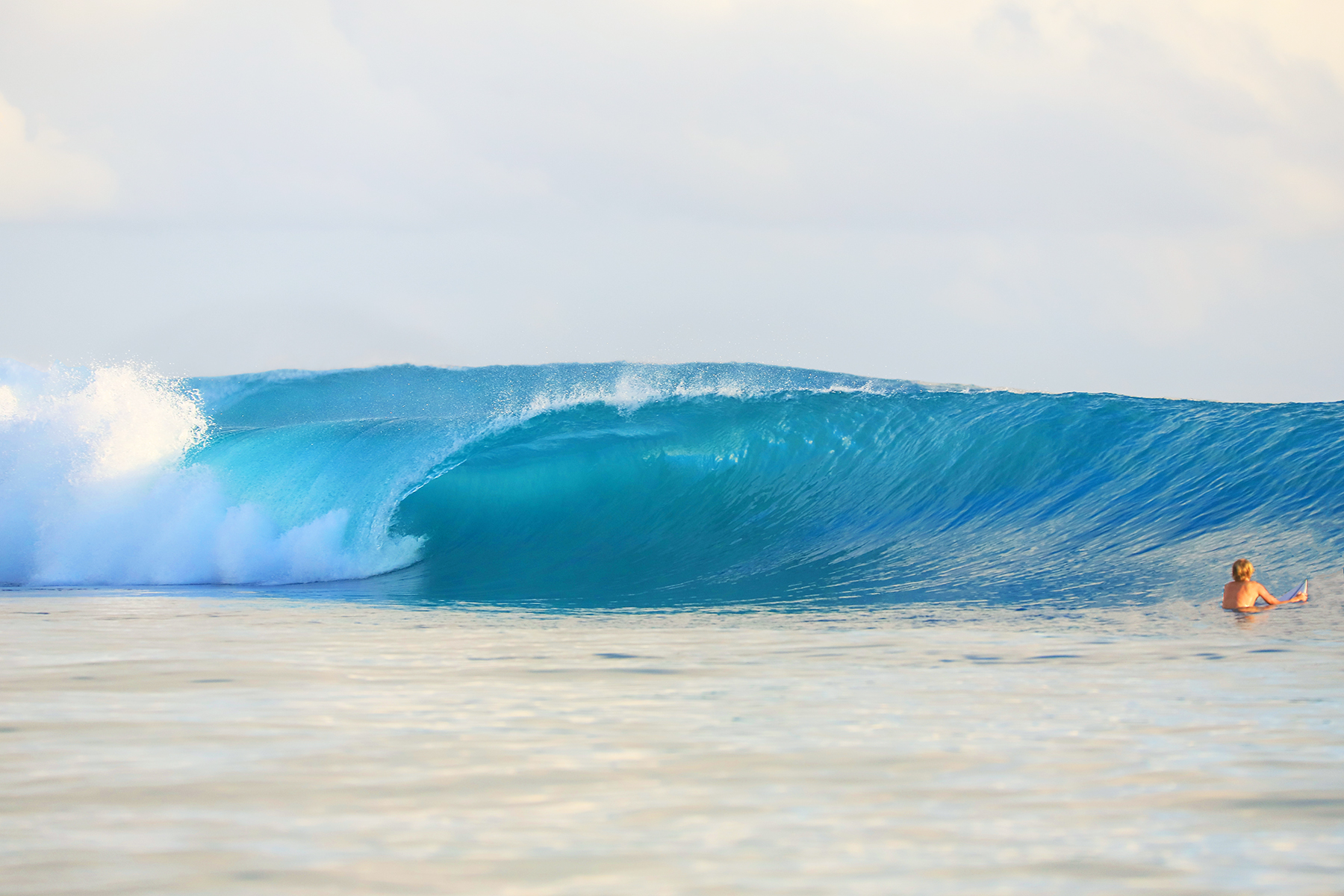
“So, you want something familiar that you’re comfortable with on most days,” Danny continues. “Then, there will be a fair amount of days that are basically still shortboard-able, but they are a little bigger, a little more powerful, and/or a little harder to get into. For those days, I’d pack something like a 5’10” – 6’0″ board with a bit more of a pulled in tail. These are the non-death-defying barrel days where you hope to be coming out and laying down heavy carves instead of tail whips and airs. Then, you want a board for days that are biggish and heavyish, where you’re basically hoping to make the barrel or wave in general because you’re flying so fast. For me, this would be between a 6″2″- 6’6″ pintail.”
He said packing was the most important part of your quiver.
“I’ve come to realise that I can comfortably pack five boards and still keep my bag under 23kg (50lbs), which is the limit Singapore Air allows for oversize baggage,” Danny offers. “So, which five boards I pack depends a lot of the previously mentioned factors. If I’m heading to North Sumatra with a group of guys that charge hard, and the forecast looks properly solid, I might then pack a more proper gun, something in the 6’8″ – 7’0” range. For most of the waves in both areas that hold a ton of size, they are more like Cloudbreak than Teahupo’o, meaning that you have time to roll into them, and getting your nose stuck because you have too much board in front of you and it’s sucking out so hard is not an issue. So, in these cases, volume and a little extra length is often your friend. At the same time, these waves are perfect and not really known for being proper “big waves”, so much more than a 7’0″ for me has always been overkill.”
He said if he was travelling with a more “mellow group” he’d probably pack a back up of his shortboard.
“That’s the board you’ll be using most often, and it’s also the board you’re most likely to break,” he adds.

Scuzz said he has watched Indo boards get thicker, wider and shorter over the years.
“It has become more about volume than length,” he offers. “There are also a lot of fun waves in the islands. You will find you surf a lot of waves that are more fun on a little more of a fun board rather than a pure performance board. Another thing is the lack of wind – it’s usually pretty clean and its not often that big. There are a lot of twice overhead waves, there are bigger waves if you want, but when they are triple overhead, the better quality waves are twice overhead and most want to surf them. So you often don’t surf much above twice overhead, and without a wetsuit, you don’t need much size to paddle into those waves, unless you are super unfit or overweight.”
Scuzz said he’d recommend a short board, a step up and then a spare of one of those, or, even better, an in between – a short board with more volume.
“It has become more about volume than length. There are a lot of fun waves in the islands … and another thing is the lack of wind – it’s usually pretty clean. There are a lot of twice overhead waves. There are bigger waves if you want, but when they are triple overhead, the better quality waves are twice overhead and most want to surf them.”
Equipment For The Topics
Most Kiwis will be coming from 3:2 or 4:3 rubber in our winter so the jump to boardies and rash tops can often result in rashes and rib bruises. Then there is the debate over reef booties … Danny sheds some light from his years of experience.
“First and foremost, take it easy the first couple of days,” he offers with a shake of his head. “If you don’t go out too hard, you give your body the best possible chance of acclimatising on it’s own to less protection. For most sessions, particularly early on, I wear a rash guard. I also bring a little 1.5 mil tank-top style top. It’s usually way too warm to wear a full arm-length 1.5mm top, but I find if you wear the tank top style it protects your ribs better while not overheating you. If you wear just the tank top, without an additional rash guard on top, then slather that sunscreen on your shoulders and arms. No part of your body receives more direct sunlight than your shoulders. Don’t be a cool guy; seriously, slather that shit on.”
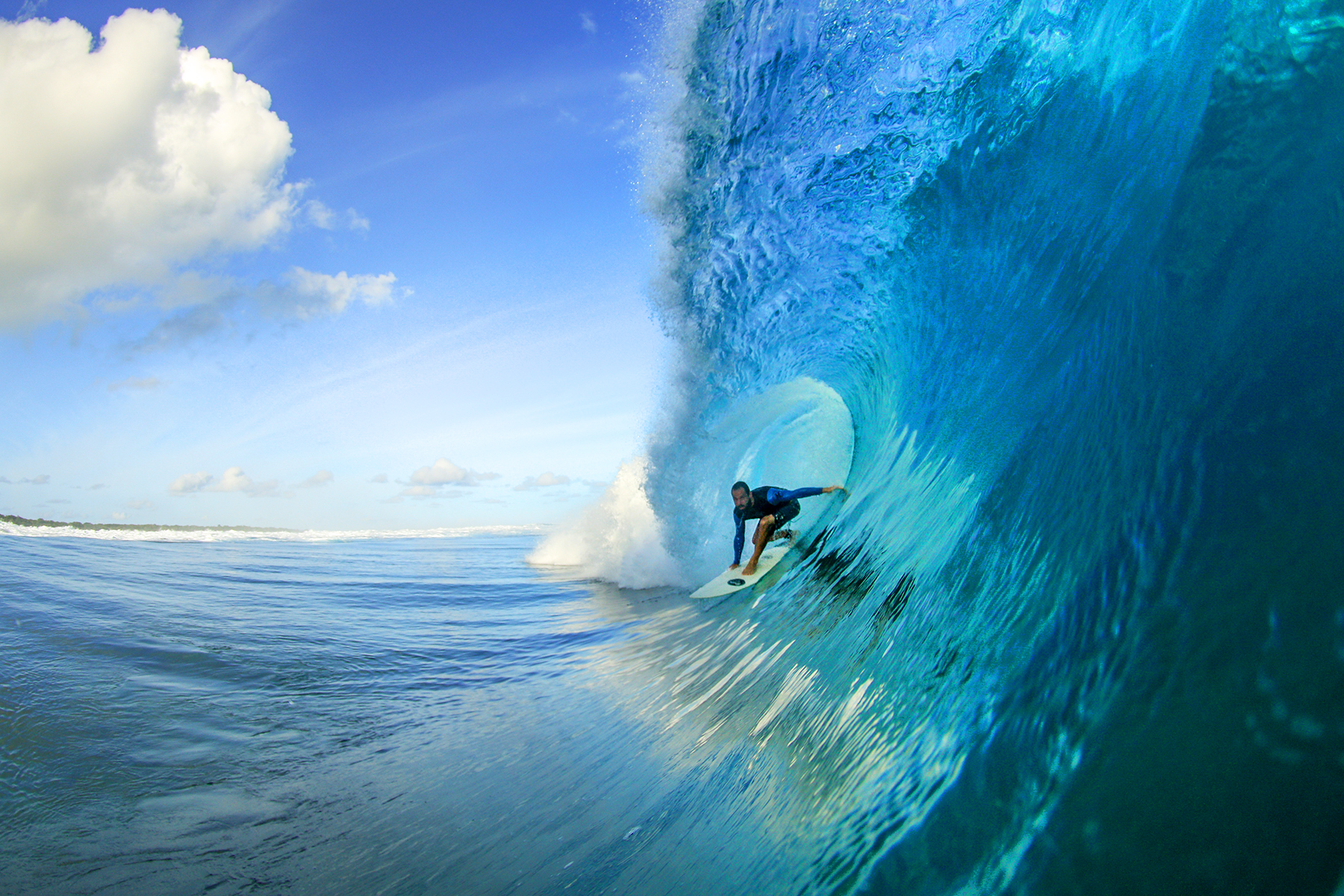
Danny recommends bringing the highest SPF sunscreen you can find. He prefers the sticks for the face, as it is thicker and you can avoid touching it.
“In the beginning of your trip, you really should cover the back of your legs,” Danny offers. “If this sunscreen comes off easily and is super oily, it will get on your rails and make your board slippery. So, be generous, yet careful, in its application.”
Over time, throughout the trip, your body will tan and get used to the sun, and you don’t need to be as vigilant.
“Nothing limits you more from surfing than a gnarly sunburn,” Danny explains. “I almost always wear a rashguard during the peak daylight hours throughout the entire trip. As the trip progresses, I’ll often surf without a top for the dawn patrols or glass-off sessions, or perhaps when it rains. But the sun is just too damn powerful to be consistently bare-backing it it during the middle of the day. Some guys like the t-shirt thing; I’ve always found that they weigh so much more and kind of pull in water through the neck as you pop up. Yeah, they look cooler, but they are less user friendly.”
Danny said surf hats were a good idea to protect the skin on your face and shield your eyes.
“I swear, sometimes the sun is so bright out there it’s just like laser beams in your eyes,” Danny explains. “It’s crazy that these small little things, our eyes, can cause so much discomfort across your entire body when they get irritated, but it can really put a damper on things if you’re suffering from eye pain.”

The bigger Gilligan-style hats provide more overall protection, but can feel a bit cumbersome.
“I really like the lightweight baseball-style caps with the plastic bill you can flip up,” Danny offers. “With the plastic ones, you can leave the bill down right up until you catch a wave and then flip it up at the last minute for added visibility, and it weighs a lot less.”
For the love of god, pack a set of reef booties, urged Danny.
“It is way, way, way better to have them than to not bring them at all,” he said. “I know, they certainly don’t look the coolest, but they can undoubtedly make or break your trip. Your guide will advise you on the truly shallow, dangerous spots. I 100% recommend wearing reef booties at those spots, at least early on. There are a couple reasons for this: one, it’s almost always way sharper than it looks. If you come from a beach break, or an area where you often put your feet down after you finish a wave, it’s really hard not to do that at first when you’re in these waters. After you’ve got the starfish technique down to a science, you can be less rigid in wearing them.”
If you put your feet down, even on accident, there’s a good chance you’ll get a cut, according to Danny.
“Even if it’s just a small cut, the problem is that you’re basically surfing all the time, and when you’re on the boat it’s a pretty wet, humid environment,” Danny explains. “So, these cuts sometimes never heal, and it’s not uncommon for a 1cm cut to blossom into a gaping axe wound by the end of the trip. All cuts take long to heal in these waters, but feet are particularly bad because you can’t avoid using them, and they are obviously very important to surfing.”
“I 100% recommend wearing reef booties at those spots, at least early on. There are a couple reasons for this: one, it’s almost always way sharper than it looks. If you come from a beach break, or an area where you often put your feet down after you finish a wave, it’s really hard not to do that at first when you’re in these waters. After you’ve got the starfish technique down to a science, you can be less rigid in wearing them.”
Fitness Preparation
Preparing for the demands of 10 days in a row surfing pumping waves will enhance your experience. Surfing is always the best preparation, but not always available to everyone. Some sort of fitness regime, with strength and cardio elements will pay dividends in improving your endurance and functional strength.
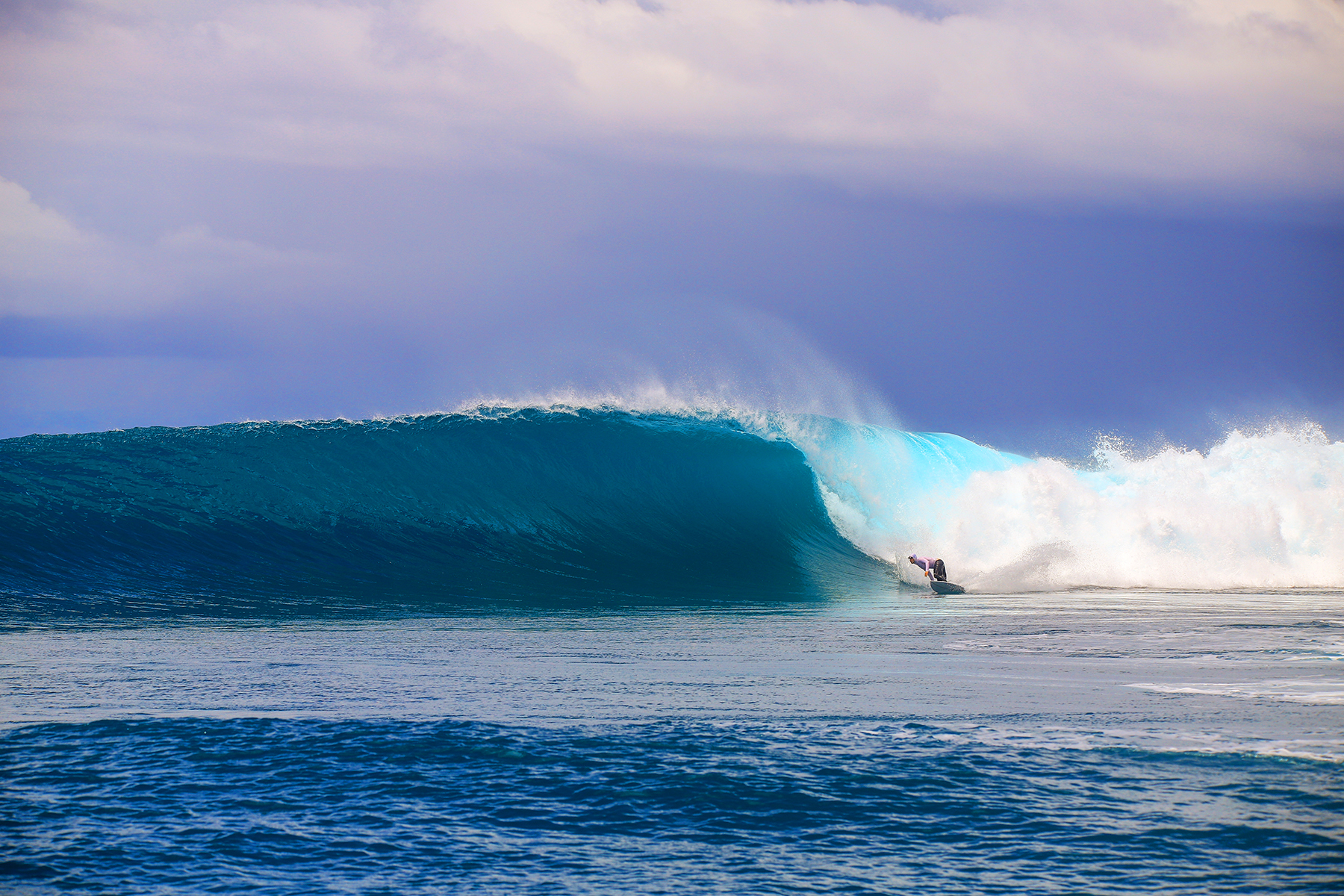
“As I get older, I try to avoid things that put stress on my joints,” admits Danny. “I do a lot of body work other than running, such as burpees, squats, mountain climbers, cycling, etc. You want to do a lot of movements that are actually functional and mimic the motions you’d be using while surfing.”
On top of exercise, you want to make sure that you’re healthy on the inside and in your head, Danny added.
“Make sure to eat the right things leading up to your trip,” he explains. “You will eat very well and very healthy on the boat. You’ll come in a lot more prepared if you’re eating a similar, well-balanced diet leading up to the trip.”
A lot of people neglect their sleep, but Danny said getting the proper amount of sleep every night is probably the best free thing you can do to improve your fitness and mental well-being. He said coming on a boat trip in a good head space was very important.
“This is the trip of a life time, so try to put your work or other life stresses aside prior to arrival,” Danny explains. “Get your shit together, make sure your family affairs are in order, and have your work life well sorted out so that you can arrive on this trip with peace of mind so you can focus on getting barreled and surfing your brains out. Odds are you worked really hard to get to the point where you can afford and fully appreciate this kind of trip; so do all the groundwork ahead of time to make the absolute most of it.”
“This is the trip of a life time, so try to put your work or other life stresses aside prior to arrival … so that you can focus on getting barreled and surfing your brains out.”
Assemble Your Crew
You’re a long time on a boat trip so having a crew of surf buddies who are all on the same page for their Sumatran ambitions is a great place to start.Ideally you want everyone to have similar surfing abilities, same rough age, similar personalities and interests and similar partying levels.
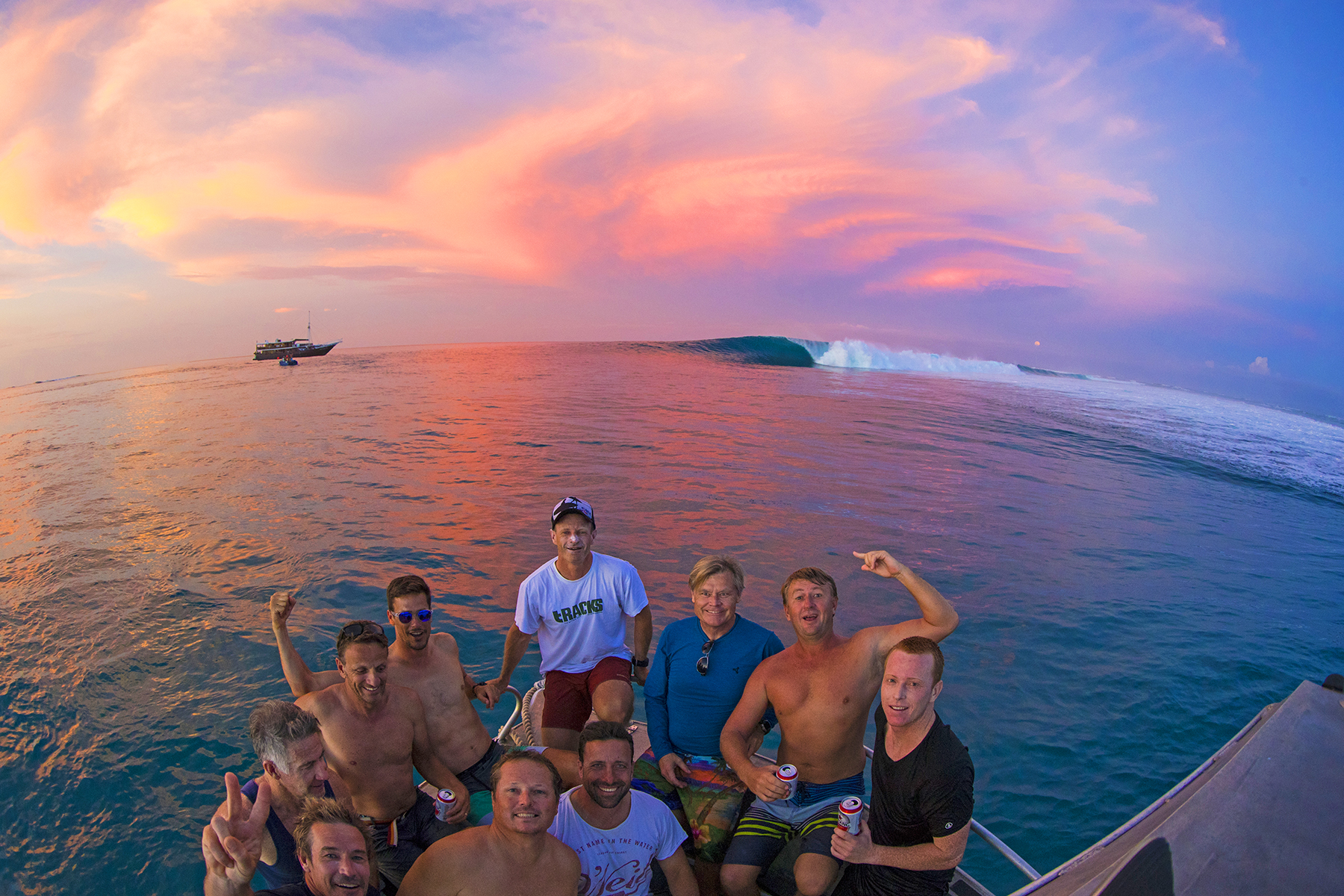
“Ideally, you’d want to pick mates you’ve already traveled with before,” Danny recommends. “This is not the trip I’d pick to find out you have a friend you hate traveling with. It’s a very intimate setting, being in such close quarters for two weeks, sharing something that is probably one of the biggest passions for each of the guests.”
Danny said that in rare cases a boat trip brings to light things in friends they’ve never seen before – things you might not like.
“It’s not the type of trip, for example, where half of you are pro-Trump and half of you are anti-Trump,” Danny laughs.
When bringing in outside guests to round out a roster for Sumatran Surfariis trips they run through the same criteria and do their very best to make sure that guests seem like a good fit for one another.
“It’s not the type of trip, for example, where half of you are pro-Trump and half of you are anti-Trump.”

Turning Your Dream To Reality
Most of our New Zealand Surf Journal readers have been dreaming all their surfing lives for a trip to the Mentawais. We ask Danny if it deserves the hype?
“It really is that good,” he laughs. “The absolute worst boat trip I’ve ever done was still 10 times better than any other surf trip I’ve taken. And I’ve spent a good chunk of my life looking for the ‘next Mentawais’ and so has Scuzz.”
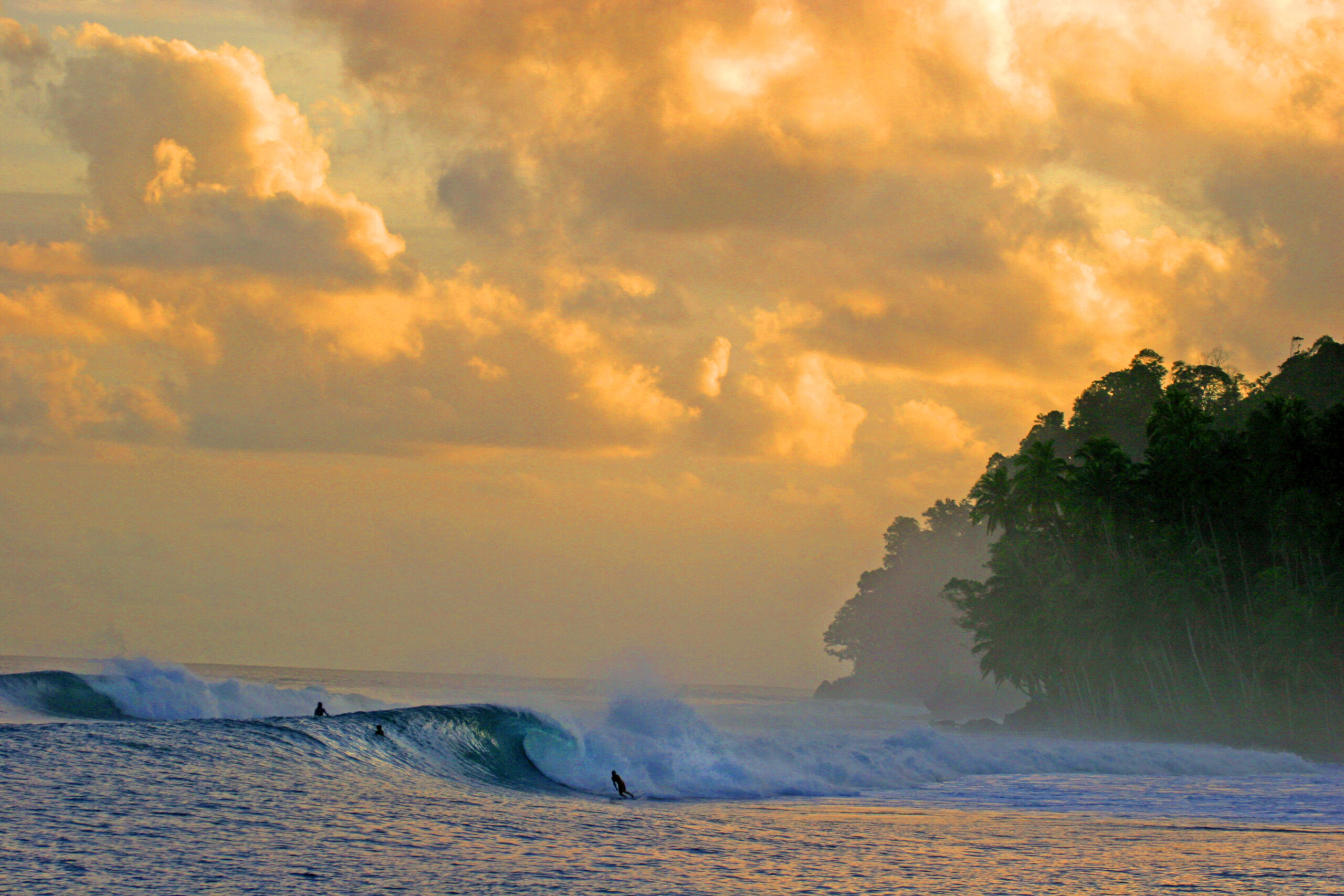
Danny said with all the GPS and mapping technologies in the world, it was pretty safe to say it would have been found by now.
“It really is, pound-for-pound, the best surf trip you can take,” he adds. “Over a two-week period, I challenge anyone to get a greater variety of great to world-class waves. This place has become famous for a reason. There is a reason I’ve made dozens and dozens of trips where it takes me more than 48 hours travel time from my house to the first waves – it really is that good.”
“And as hard-core surfers ourselves, we’ve never lost sight of that,” Danny explains. “We all still want the same things our guests do: amazing waves in beautiful conditions with as few people on them as possible. We also realise there is just something really fucking cool about finding and surfing all these waves while living aboard a boat for two weeks.”
Danny said there was something really satisfying about doing trips the right way, putting the desires of the guests first and creating dream trips.
“It’s very satisfying and rewarding bringing people joy when they’ve waited so long and worked so hard for this, so we’ll always strive to bring them the best and most authentic surf trip experience. We often refer to the guests as ‘family’ after one of our trips. It’s such a bonding experience, we really feel that term is appropriate, and we hope to see our family members again and again in the future.”

“I’ve never become the slightest bit jaded about that,” he smiles. “There’s just something really fucking cool about living on a boat while you take multiple-hour breaks daily to go surf perfect waves. It still feels like an adventure, and I still feel a little bit like a gringo pirate every time.”
“There’s just something really fucking cool about living on a boat while you take multiple-hour breaks daily to go surf perfect waves. It still feels like an adventure, and I still feel a little bit like a gringo pirate every time.”
